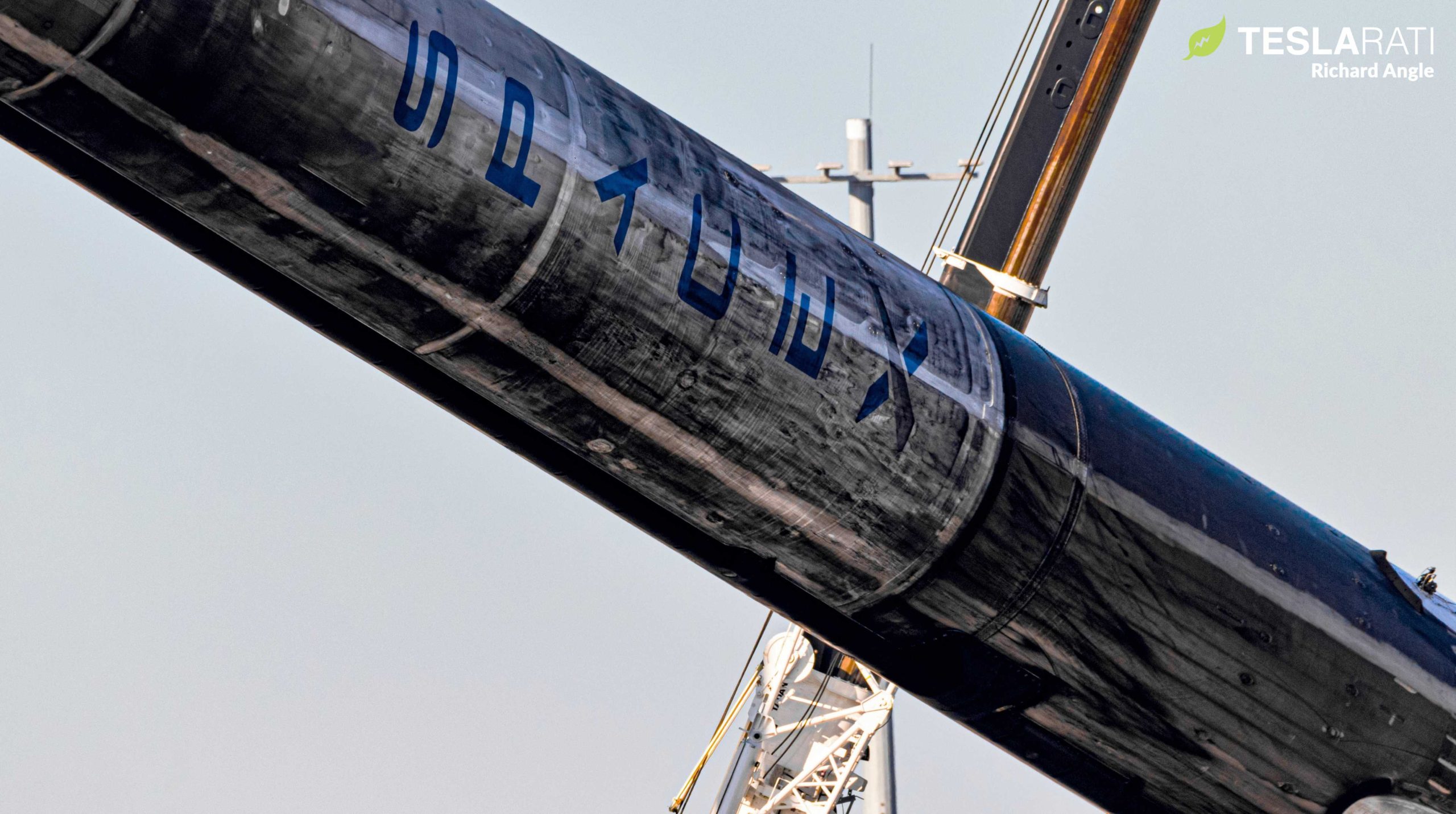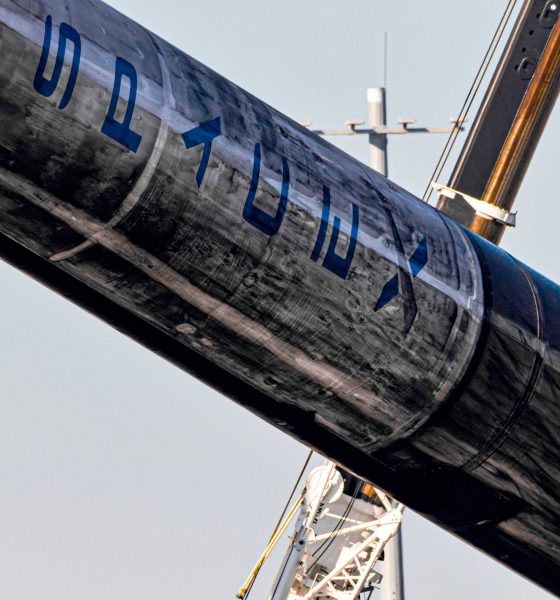

News
SpaceX whistleblowers allege widespread sexual harassment
On the heels of a similar report on Blue Origin, five whistleblowers in two different exposes from Lioness and The Verge allege that SpaceX effectively fosters a work environment that is extremely hostile and unresponsive to women.
Above all else, all five former employees describe experiencing sexual harassment, inept responses from human resources (HR), and varying degrees of retaliation after attempting to pursue a fair corporate response. Ashley Kosack, a Rochester Institute of Technology Dean’s List graduate of mechanical engineering and a former SpaceX mission integration engineer and intern with almost four years of experience at the company between January 2017 and November 2021, is at the center of both reports.
First, it’s crucial to note that while several recent Blue Origin exposes alleged rampant sexual harassment and major internal issues that threatened the safety of its projects and of the space tourists that fly on its rockets, none of the whistleblowers attempting to hold SpaceX accountable for its poor treatment of women employees raised concerns about the company’s approach to safety. Nevertheless, Ashley Kosack, Julia CrowleyFarenga, and three other anonymous employees raise allegations that should still be taken seriously.
Above all else, the five describe an environment where women and nonbinary employees are regularly harassed by their male colleagues (ranging from fellow interns and entry-level engineers to managers and senior technicians), whose behavior is then effectively ignored or swept under the rug by SpaceX’s human resources department. In some cases, not only did HR fail to rectify the situation in any way, but they apparently made harassers aware of the allegation and the person alleging harassment. Some were then harassed more and retaliated against, often leading to severe stress and sometimes causing the harassed employees to quit outright.
In two particularly egregious examples, Kosack discovered that SpaceX – an almost two-decade-old company – apparently has no official HR system or mechanism in place to ensure that employees who harass other employees are not only punished accordingly, but at all. It’s difficult to assume anything good about the work culture of a company that explicitly refuses to ensure that sexual harassers face predictable repercussions for their actions. Later, when attempting to take advantage of SpaceX and COO Gwynne Shotwell’s often-advertised “Ethics and Compliance tip line,” Kosack discovered that the tip line wasn’t actually anonymous – making a farce of a tool theoretically meant to make internal whistleblowers feel comfortable enough to speak up.
One source that spoke to Teslarati revealed that that was also the case years ago and has even resulted in at least one employee being fired in retaliation for attempting to raise what they believed were real safety concerns. Shotwell, among others, reportedly receives all content submitted via the tip line. However, SpaceX has achieved an incredible record of success over the last five years, successfully completing more than 100 Falcon launches in a row. SpaceX, with NASA oversight, has also completed five crewed launches since May 2020, successfully launching 18 people in less than a year and half. If there are or were major safety concerns about how SpaceX was building, testing, or flying its Falcon rockets and Dragon spacecraft, that evidence suggests that the company is able to effectively deal with them.
All five whistleblowers still agreed that SpaceX is managing those feats despite consistently treating its workforce like an expendable resource – especially in the case of nonbinary and women employees. Even for men at SpaceX, it’s incredibly rare for employees to last more than five years – which, at least a few years ago, happens to be when accrued equity vests. As long as that remains the case and as long as employees feel like they’re hopeless in the face of egregious harassment, it’s hard to imagine that those retention issues will ever change or that SpaceX’s poor workforce diversity will ever significantly improve.

News
Elon Musk’s Grok AI to be used in U.S. War Department’s bespoke AI platform
The partnership aims to provide advanced capabilities to 3 million military and civilian personnel.

The U.S. Department of War announced Monday an agreement with Elon Musk’s xAI to embed the company’s frontier artificial intelligence systems, powered by the Grok family of models, into the department’s bespoke AI platform GenAI.mil.
The partnership aims to provide advanced capabilities to 3 million military and civilian personnel, with initial deployment targeted for early 2026 at Impact Level 5 (IL5) for secure handling of Controlled Unclassified Information.
xAI Integration
As noted by the War Department’s press release, GenAI.mil, its bespoke AI platform, will gain xAI for the Government’s suite of tools, which enable real-time global insights from the X platform for “decisive information advantage.” The rollout builds on xAI’s July launch of products for U.S. government customers, including federal, state, local, and national security use cases.
“Targeted for initial deployment in early 2026, this integration will allow all military and civilian personnel to use xAI’s capabilities at Impact Level 5 (IL5), enabling the secure handling of Controlled Unclassified Information (CUI) in daily workflows. Users will also gain access to real‑time global insights from the X platform, providing War Department personnel with a decisive information advantage,” the Department of War wrote in a press release.
Strategic advantages
The deal marks another step in the Department of War’s efforts to use cutting-edge AI in its operations. xAI, for its part, highlighted that its tools can support administrative tasks at the federal, state and local levels, as well as “critical mission use cases” at the front line of military operations.
“The War Department will continue scaling an AI ecosystem built for speed, security, and decision superiority. Newly IL5-certified capabilities will empower every aspect of the Department’s workforce, turning AI into a daily operational asset. This announcement marks another milestone in America’s AI revolution, and the War Department is driving that momentum forward,” the War Department noted.
News
Tesla FSD (Supervised) v14.2.2 starts rolling out
The update focuses on smoother real-world performance, better obstacle awareness, and precise end-of-trip routing, among other improvements.

Tesla has started rolling out Full Self-Driving (Supervised) v14.2.2, bringing further refinements to its most advanced driver-assist system. The new FSD update focuses on smoother real-world performance, better obstacle awareness, and precise end-of-trip routing, among other improvements.
Key FSD v14.2.2 improvements
As noted by Not a Tesla App, FSD v14.2.2 upgrades the vision encoder neural network with higher resolution features, enhancing detection of emergency vehicles, road obstacles, and human gestures. New Arrival Options let users select preferred drop-off styles, such as Parking Lot, Street, Driveway, Parking Garage, or Curbside, with the navigation pin automatically adjusting to the user’s ideal spot for precision.
Other additions include pulling over for emergency vehicles, real-time vision-based detours for blocked roads, improved gate and debris handling, and extreme Speed Profiles for customized driving styles. Reliability gains cover fault recovery, residue alerts on the windshield, and automatic narrow-field camera washing for new 2026 Model Y units.
FSD v14.2.2 also boosts unprotected turns, lane changes, cut-ins, and school bus scenarios, among other things. Tesla also noted that users’ FSD statistics will be saved under Controls > Autopilot, which should help drivers easily view how much they are using FSD in their daily drives.
Key FSD v14.2.2 release notes
Full Self-Driving (Supervised) v14.2.2 includes:
- Upgraded the neural network vision encoder, leveraging higher resolution features to further improve scenarios like handling emergency vehicles, obstacles on the road, and human gestures.
- Added Arrival Options for you to select where FSD should park: in a Parking Lot, on the Street, in a Driveway, in a Parking Garage, or at the Curbside.
- Added handling to pull over or yield for emergency vehicles (e.g. police cars, fire trucks, ambulances).
- Added navigation and routing into the vision-based neural network for real-time handling of blocked roads and detours.
- Added additional Speed Profile to further customize driving style preference.
- Improved handling for static and dynamic gates.
- Improved offsetting for road debris (e.g. tires, tree branches, boxes).
- Improve handling of several scenarios, including unprotected turns, lane changes, vehicle cut-ins, and school buses.
- Improved FSD’s ability to manage system faults and recover smoothly from degraded operation for enhanced reliability.
- Added alerting for residue build-up on interior windshield that may impact front camera visibility. If affected, visit Service for cleaning!
- Added automatic narrow field washing to provide rapid and efficient front camera self-cleaning, and optimize aerodynamics wash at higher vehicle speed.
- Camera visibility can lead to increased attention monitoring sensitivity.
Upcoming Improvements:
- Overall smoothness and sentience.
- Parking spot selection and parking quality.
News
Tesla is not sparing any expense in ensuring the Cybercab is safe
Images shared by the longtime watcher showed 16 Cybercab prototypes parked near Giga Texas’ dedicated crash test facility.

The Tesla Cybercab could very well be the safest taxi on the road when it is released and deployed for public use. This was, at least, hinted at by the intensive safety tests that Tesla seems to be putting the autonomous two-seater through at its Giga Texas crash test facility.
Intensive crash tests
As per recent images from longtime Giga Texas watcher and drone operator Joe Tegtmeyer, Tesla seems to be very busy crash testing Cybercab units. Images shared by the longtime watcher showed 16 Cybercab prototypes parked near Giga Texas’ dedicated crash test facility just before the holidays.
Tegtmeyer’s aerial photos showed the prototypes clustered outside the factory’s testing building. Some uncovered Cybercabs showed notable damage and one even had its airbags engaged. With Cybercab production expected to start in about 130 days, it appears that Tesla is very busy ensuring that its autonomous two-seater ends up becoming the safest taxi on public roads.
Prioritizing safety
With no human driver controls, the Cybercab demands exceptional active and passive safety systems to protect occupants in any scenario. Considering Tesla’s reputation, it is then understandable that the company seems to be sparing no expense in ensuring that the Cybercab is as safe as possible.
Tesla’s focus on safety was recently highlighted when the Cybertruck achieved a Top Safety Pick+ rating from the Insurance Institute for Highway Safety (IIHS). This was a notable victory for the Cybertruck as critics have long claimed that the vehicle will be one of, if not the, most unsafe truck on the road due to its appearance. The vehicle’s Top Safety Pick+ rating, if any, simply proved that Tesla never neglects to make its cars as safe as possible, and that definitely includes the Cybercab.








